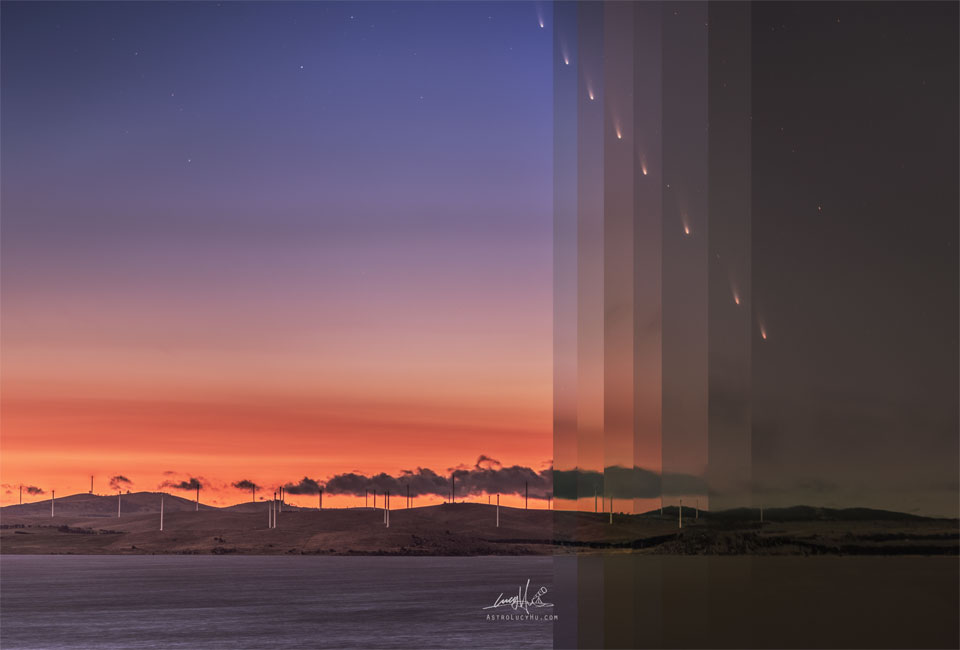
Comet Tsuchinshan-ATLAS is now visible in the early morning sky. Diving into the inner Solar System at an odd angle, this large dirty iceberg will pass its closest to the Sun -- between the orbits of Mercury and Venus -- in just two days. Long camera exposures are now capturing C/2023 A3 (Tsuchinshan–ATLAS), sometimes abbreviated as just A3, and its dust tail before and during sunrise. The featured image composite was taken four days ago and captured the comet as it rose above Lake George, NSW, Australia. Vertical bands further left are images of the comet as the rising Sun made the predawn sky increasingly bright and colorful. Just how bright the comet will become over the next month is currently unknown as it involves how much gas and dust the comet's nucleus will expel. Optimistic skywatchers are hoping for a great show where Tsuchinshan–ATLAS creates dust and ion tails visible across Earth's sky and becomes known as the GreatComet of 2024.
from NASA https://ift.tt/BpAbhZK
Comments
Post a Comment